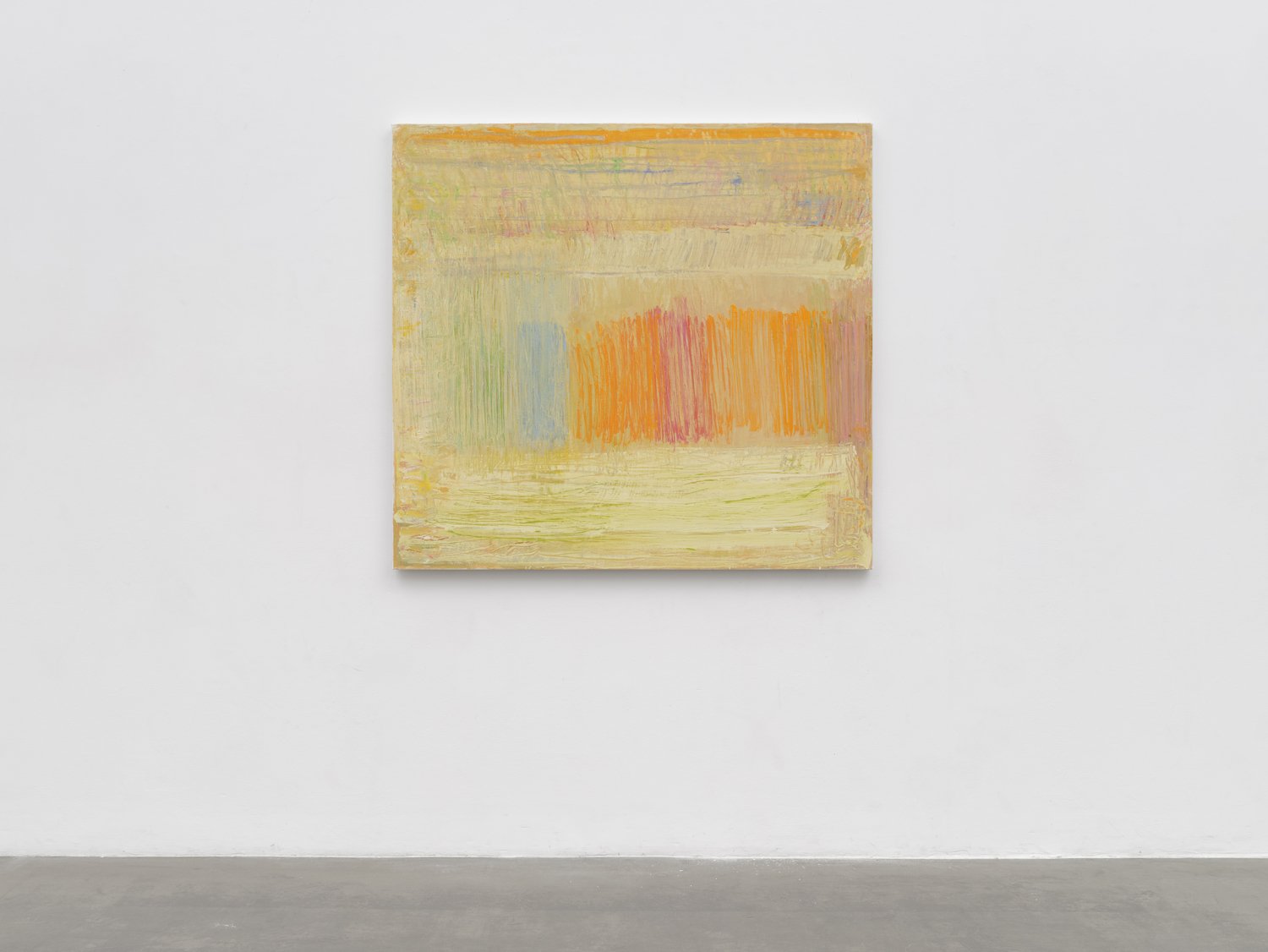Christopher Le Brun : Phases of the Moon
Christopher Le Brun 克里斯多夫·勒·布伦 Phases of the Moon II 月相II 2023 Oil on canvas 布面油画 Overall: 201 x 554 x 4 cm Overall: 79 1/8 x 218 1/8 x 1 5/8 in © Christopher Le Brun. Courtesy Lisson Gallery
British artist Christopher Le Brun returns to China for a solo exhibition at Lisson Beijing with a new series of paintings that highlight the musicality that is inherent in his artistic practice, weaving together a profound harmony of nature and melody. These ambitiously scaled works epitomise the artist’s classical technique of painting that nevertheless has its roots in spontaneity and intuition. Allowing each gesture to flow freely and drawing directly with tubes of paint without preliminary outline or under-painting, Le Brun evokes complex
spaces filled by his abundant pictorial imagination. This presentation follows Le Brun’s previous exhibitions at Lisson Shanghai in 2019, a solo exhibition at The Red Brick Art Museum and a dual presentation with Su Xinping at the Museum of Contemporary Art & Urban Planning, both in 2021.
Upon walking into the exhibition space, the spectator is greeted by a dense and extensive triptych entitled Lontano (2023), which shares its title with an orchestral composition by the twentieth-century avant-garde composer, György Ligeti. Mirroring its musical counterpart, Lontano – which is Italian for “far away” or “in the distance” – unfolds its rich interplay of staccato and legato passages (musical terms for disjunctive and flowing) that build and eventually merge into a harmonious whole. The relative quiet and emptiness communicated by light neutral tones are contrasted with episodes of frenetic texture and dark-hued intensity, creating a sense of narrative that is rare in the abstract realm.
Christopher Le Brun 克里斯多夫·勒·布伦 Tidings 潮汐 2023 Oil on canvas 布面油画 130 x 140 x 4 cm 51 1/8 x 55 1/8 x 1 5/8 in © Christopher Le Brun. Courtesy Lisson Gallery
Across the room from this monumental triptych is Le Brun’s latest searching venture into multi-panelled composition. Echoing the artist’s figurative beginnings, Phases of the Moon II (2023) finds inspiration from lunar references throughout art history. Episodes of sunlight and moonlight follow each other, embodied through alternating passages of warm and cool light. Emerging as if from the intervals between consciousness and sleep, Phases of the Moon II speaks in the symbolic language of memory and imagination.
Also presented in this multi-sensory dialogue is the captivating oil on canvas diptych, January Just (2024). Much like Lontano, this large panoramic work resembles an extended musical composition, challenging the viewer to engage with it over time. Through the build up of structure and material, January Just evokes a sense of imminence reminiscent of modern classical music. Painted incidents that emerge within the textured surface are like clues that invite the spectator to trace how its unique appearance came into being.
Christopher Le Brun 克里斯多夫·勒·布伦 January Just一月则刚 2024 Oil on canvas 布面油画 Overall: 160.5 x 401 x 4 cm Overall: 63 1/4 x 157 7/8 x 1 5/8 in © Christopher Le Brun. Courtesy Lisson Gallery
The exhibition also features two single paintings, Promenade (2023) and Tidings (2023). Employing similar motifs as a unifying thread, these works invite the spectator to travel further into the metaphorical landscape that Le Brun has created. In Promenade, the canvas becomes a vast expanse of potentiality akin to the sea, where each colour appears to break the surface or be submerged beneath it, waiting to see and to be seen. While Tidings draws inspiration from the artist's intimate connection to the landscape of the Somerset levels, it is not a literal depiction of a specific scene. Instead, by means of its subtle layers, the painting re-enacts the atmospheric nuances that brings these English grasslands to life.
The exhibition ‘Phases of the Moon’ invites viewers to a visual encounter that transcends the boundaries of traditional pictorial expression. Le Brun’s evocative paintings open up a profound experience of abstraction and sensory perception through his mastery of touch and colour.
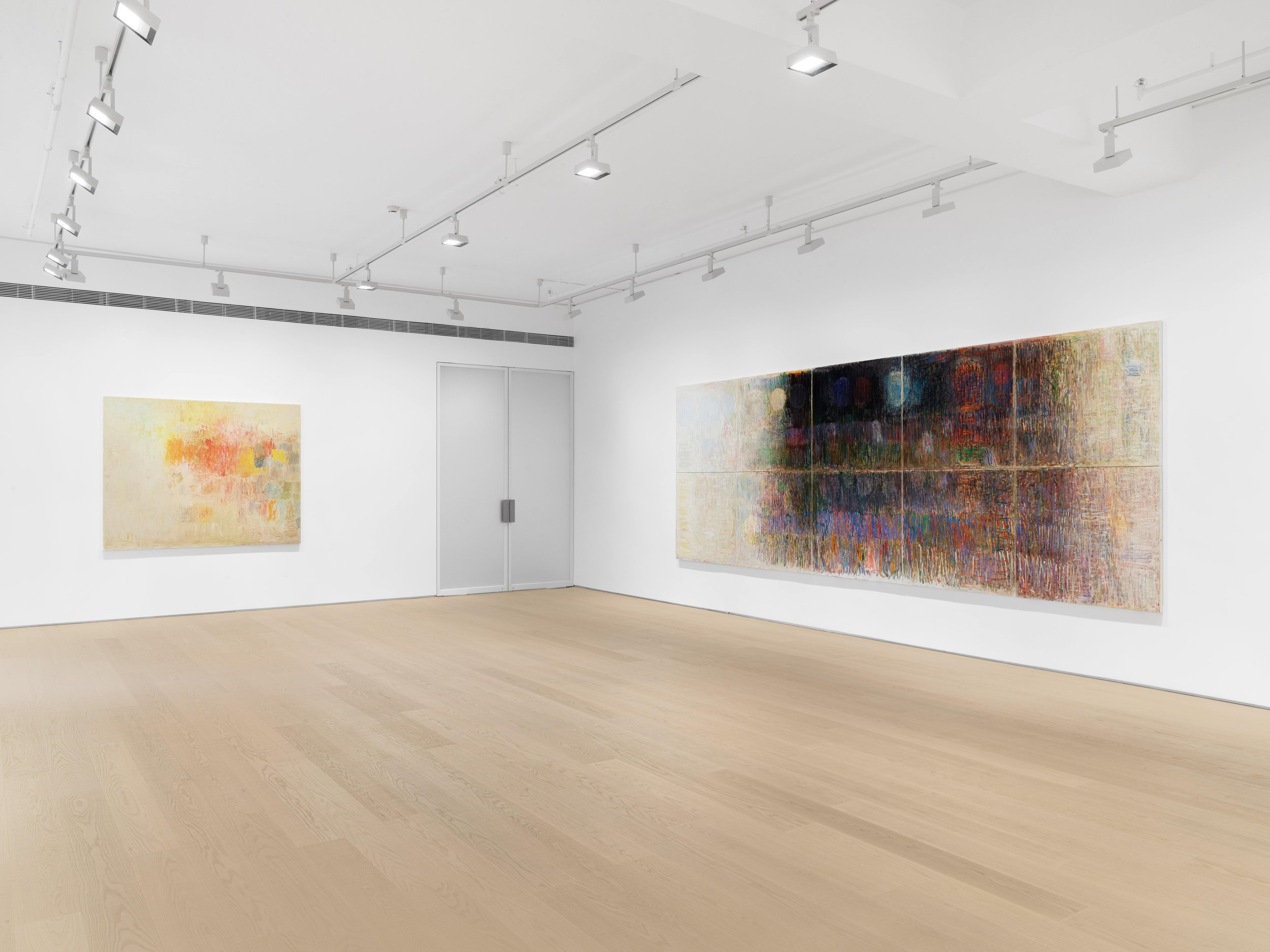

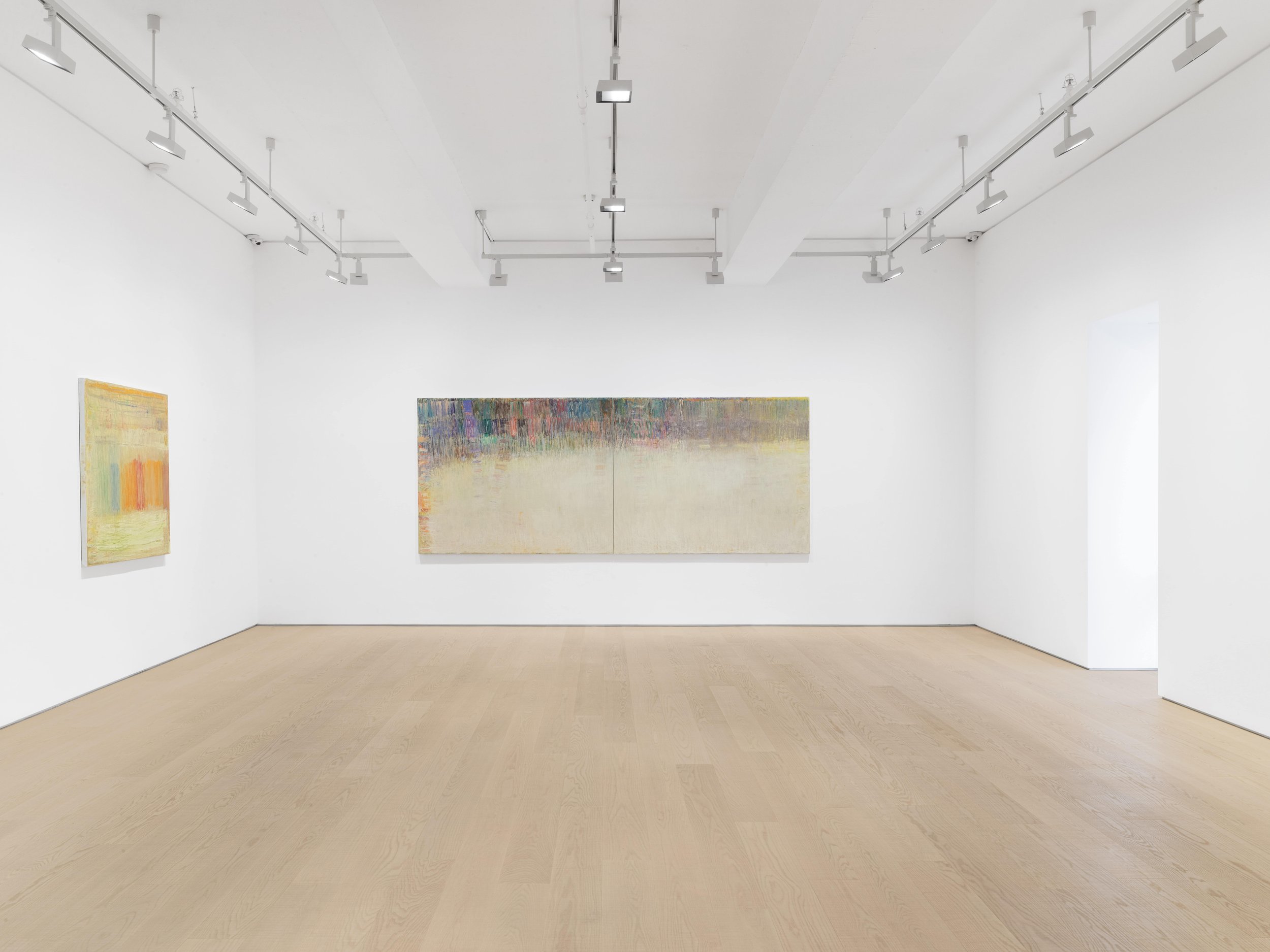

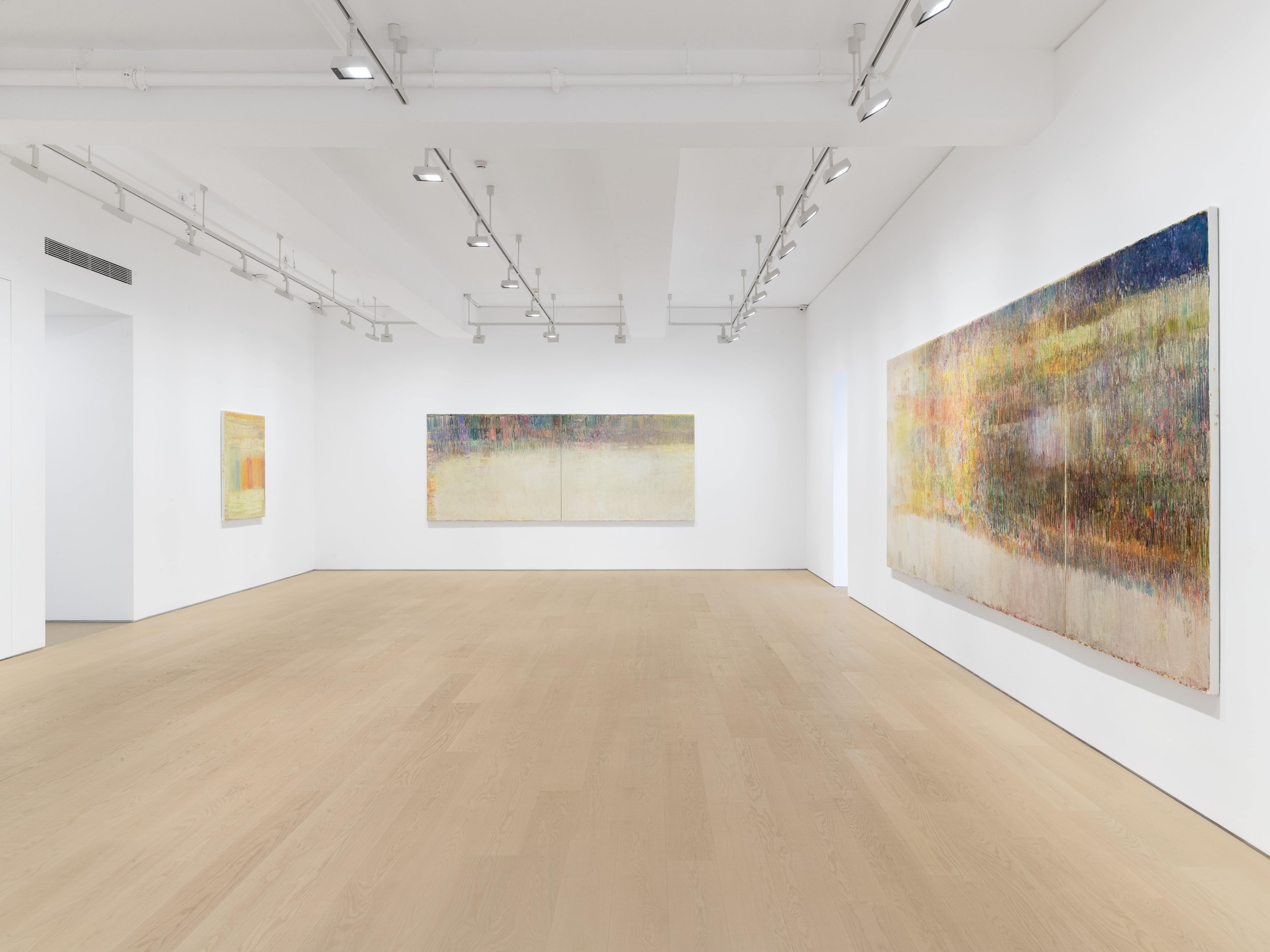
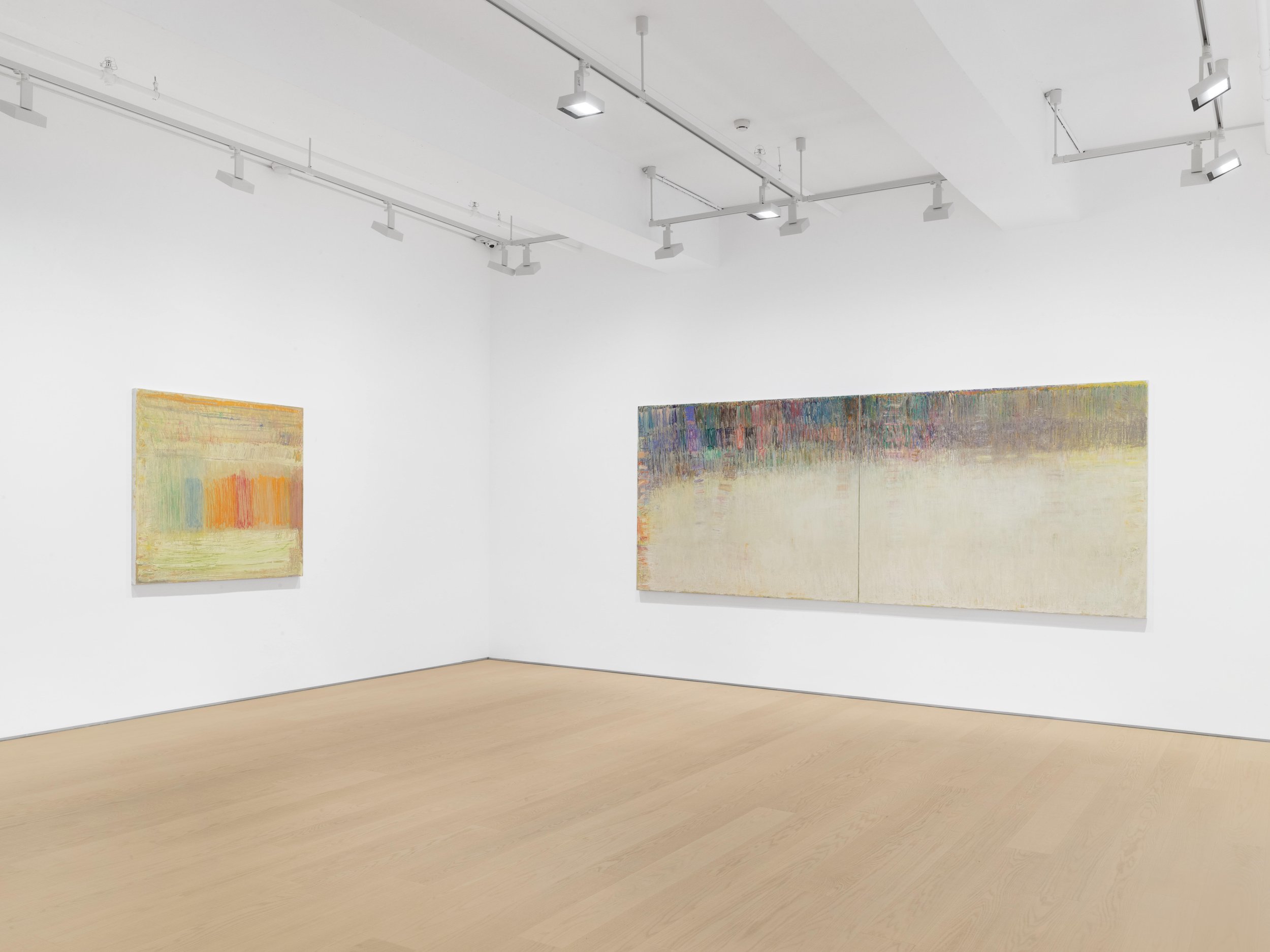
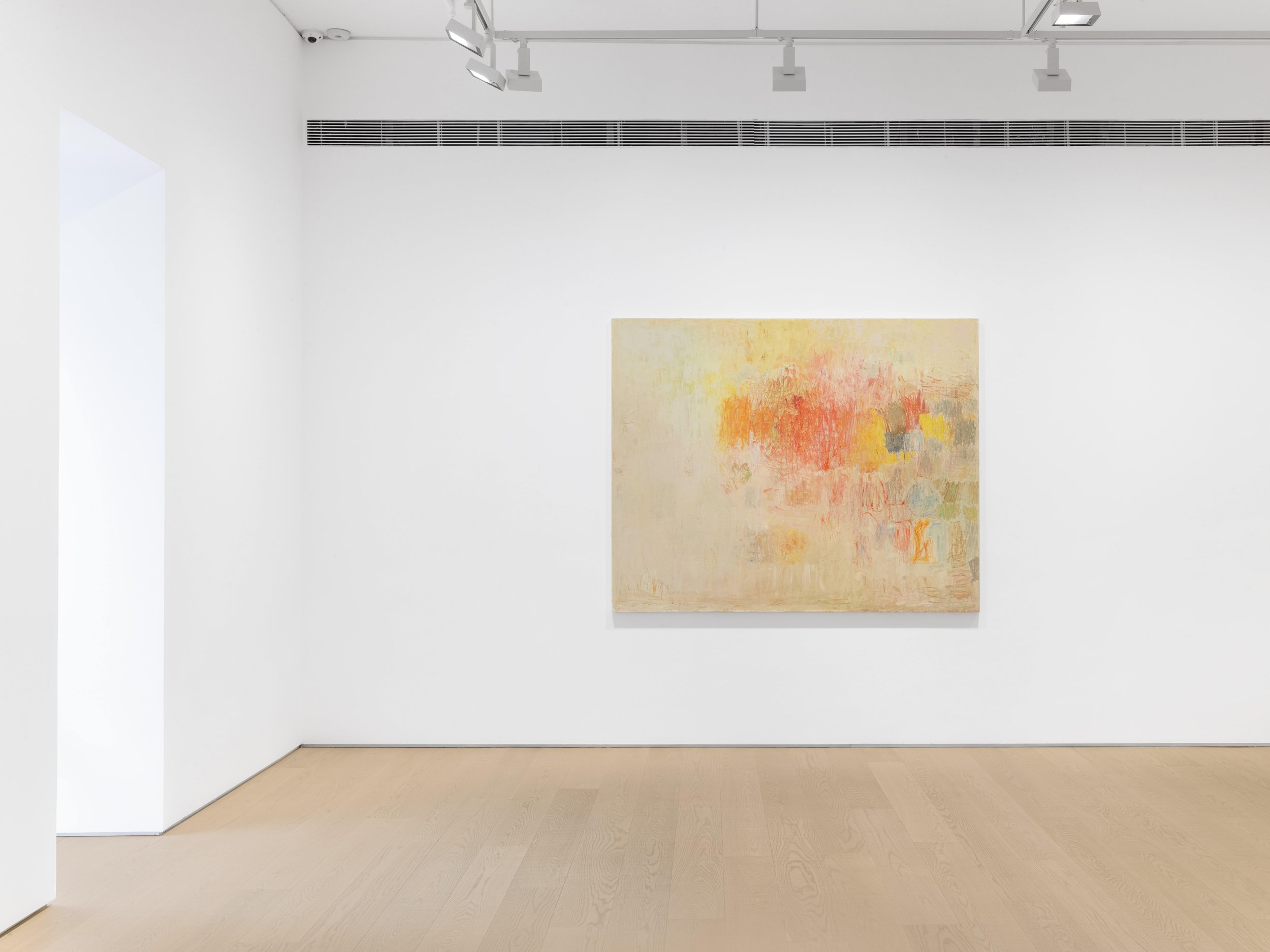

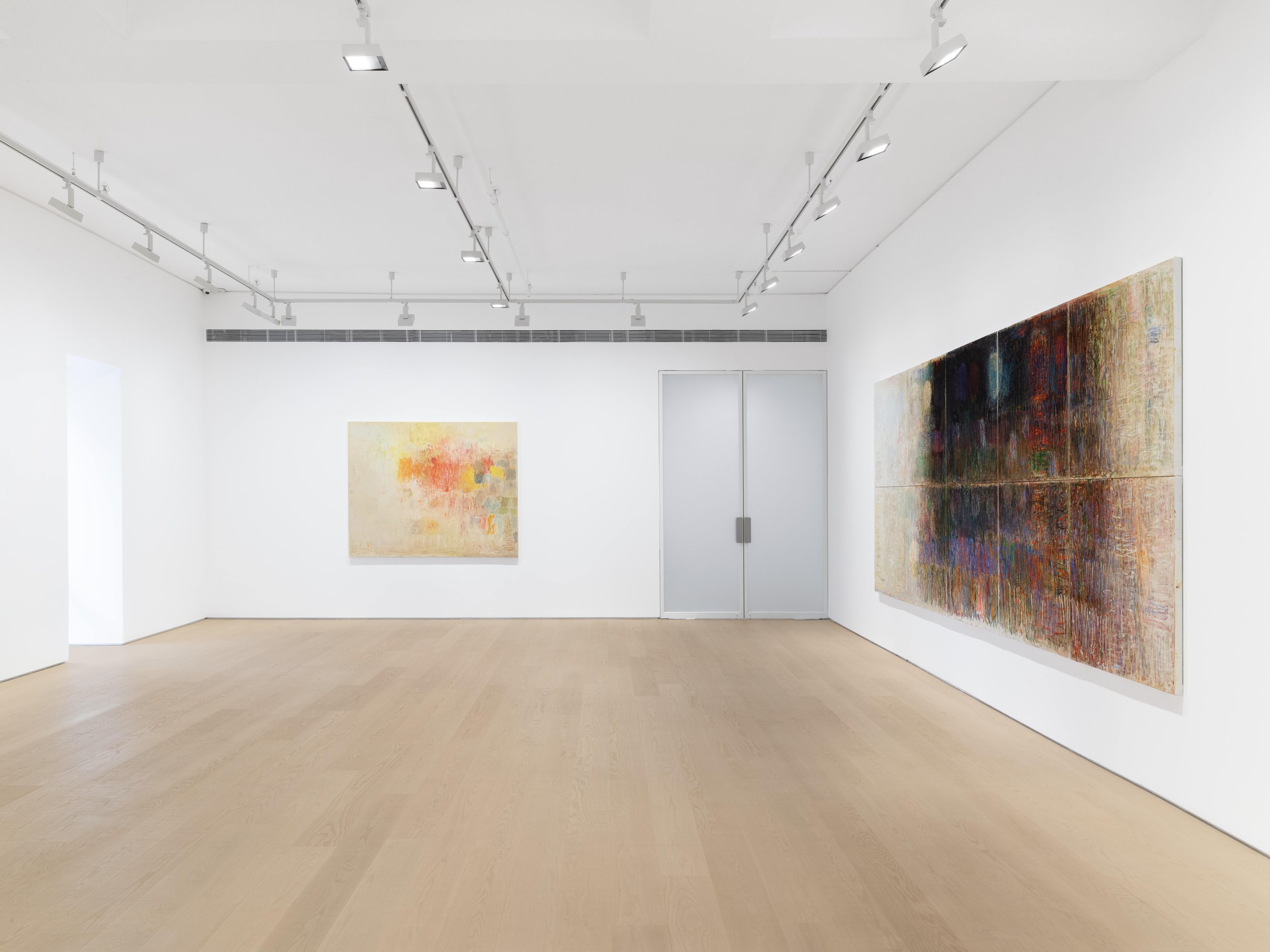
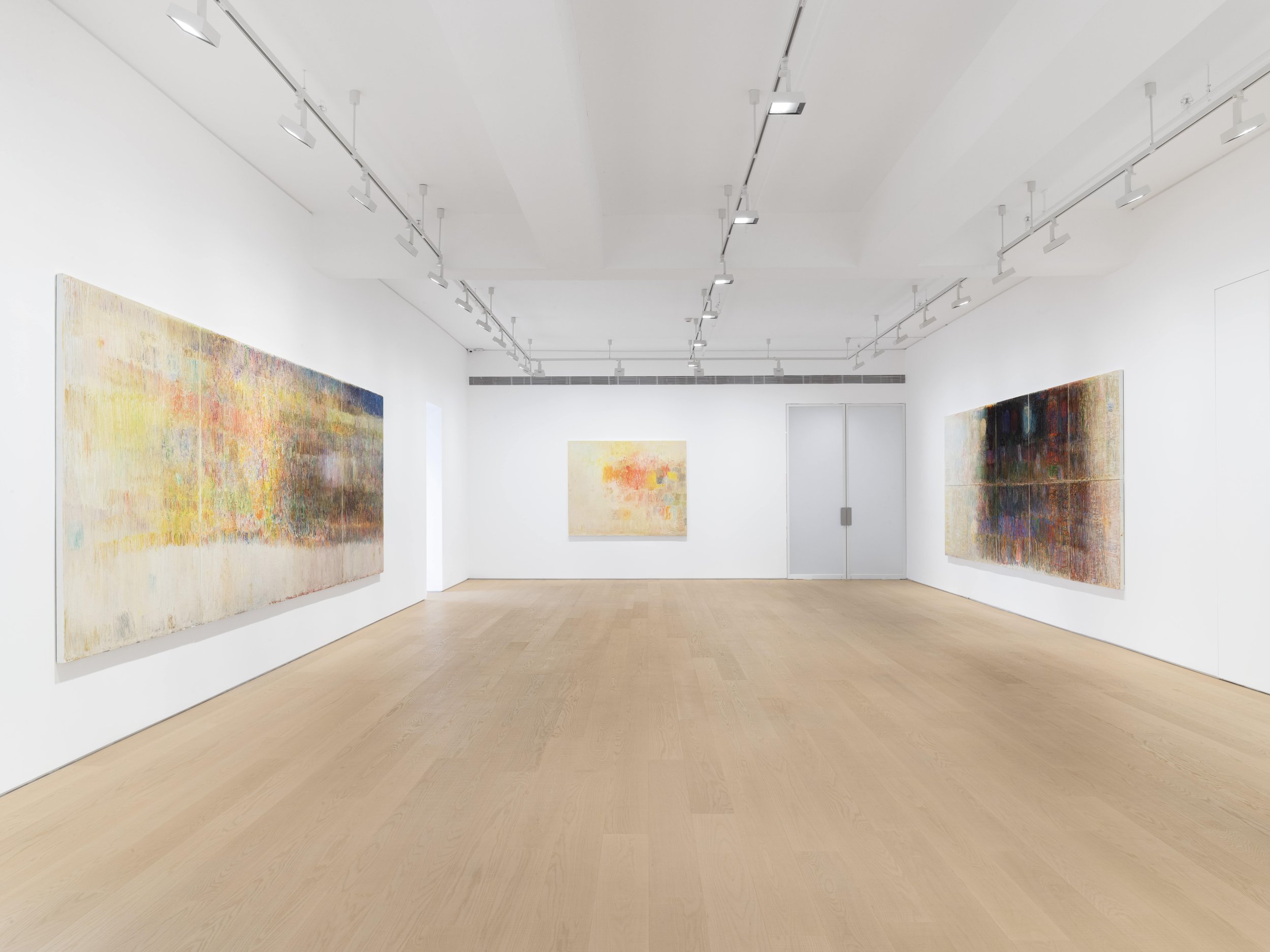
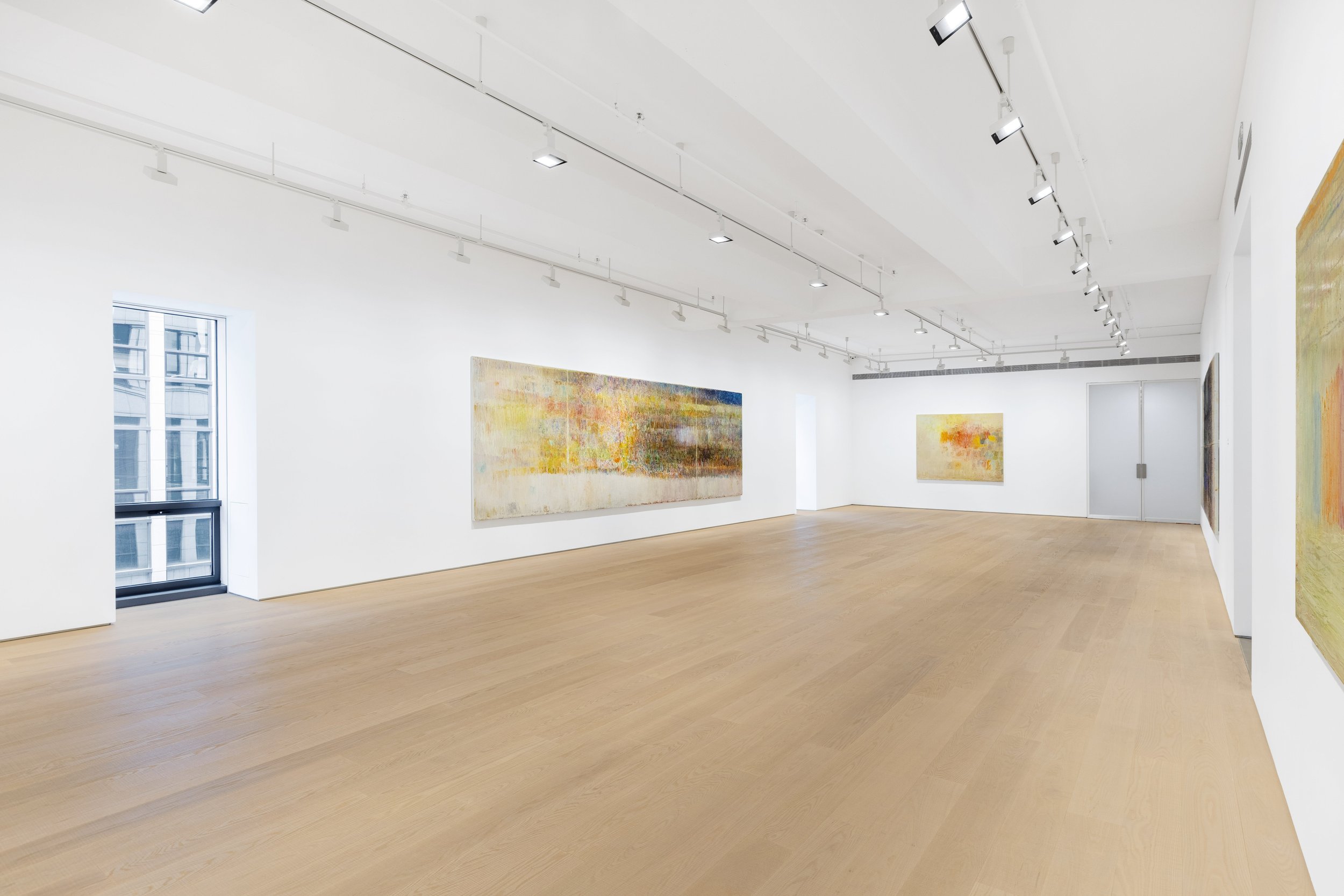
Installation view of Christopher Le Brun: Phases of the Moon, Lisson Gallery, Beijing, 18 May – Autumn 2024 © Christopher Le Brun. Courtesy Lisson Gallery. Photography by Yang Hao 克里斯多夫·勒·布伦个展「月相」现场图,里森画廊,北京,2024年5月18日至2024年秋季 © 克里斯多夫·勒·布伦。图片由里森画廊提供,由杨灏拍摄
About the artist
Sir Christopher Le Brun is one of the leading British painters of his generation, celebrated internationally since the 1980s, making both figurative and abstract work in painting, sculpture and print. He was an instrumental public figure in his role as President of the Royal Academy of Arts in London from 2011 to 2019. He was awarded a Knighthood for services to the Arts in the 2021 New Year Honours. At the beginning of 2023, a further two of his major pieces were added to institutional collections of Tate Gallery in London and the Museum of Contemporary Art & Urban Planning (MoCAUP) in Shenzhen.
Le Brun employs a mastery of touch and colour alongside a profound understanding of art history and a wide range of visual, musical and literary sources. He has remained consistent in adhering to what he feels to be the essential poetry and pleasure of painting for its own sake, led by intuition and visual imagination and resistant to external justification.
His interest in the formal possibilities of painting has led recently to the development of modular compositions from single pieces through to large and highly complex canvases, triptychs and monumental multipart paintings, extending the limits of abstract pictorial composition. A heightened awareness of the physicality of the painting process with its dramatic tension between revealing and covering, has been a central feature of his work that unites all its phases whether abstract or figurative.
Born in Portsmouth in 1951, Christopher Le Brun trained at the Slade and Chelsea Schools of Art, London. In his early career, he was a double prizewinner at the John Moores exhibitions (1978, 1980), also showing in the Venice Biennale (1980) and the ground-breaking exhibition ‘Zeitgeist’ (1982) at the Martin-Gropius Bau, Berlin. His recent solo exhibitions have been held at Albertz Benda, New York, USA (2023); Lisson Gallery, London, UK (2022); Albertz Benda, Los Angeles, USA (2022); Red Brick Art Museum, Beijing, China (2021); Albertz Benda, New York, USA (2020); Lisson Gallery, Shanghai, China (2019); Lisson Gallery, London, UK (2018); the
Southampton Art Gallery, Southampton, UK (2018); Wolfson College, Cambridge, UK (2018); Albertz Benda, New York, NY, USA (2017); The Gallery at Windsor, Vero Beach, FL, USA (2017); Colnaghi, London, UK (2015); Friedman Benda, New York, NY, USA (2014); New Art Centre, Wiltshire, UK (2010) and The New Art Gallery, Walsall, UK (2008). Le Brun served as a trustee of Tate from 1990–1995; The National Gallery from 1996–2003; the Dulwich Picture Gallery from 2000–2005; and as a founding trustee of the Royal Drawing School from 2003–2016. He was a trustee of the National Portrait Gallery between 2012-19. He was elected the first Professor of Drawing of the Royal Academy, London in 2000, where he also served as President from 2011-2021, the 26th since Sir Joshua Reynolds and the youngest since Lord Leighton in 1878.
His work is in many museum collections including Tate Gallery, London, UK; Museum of Modern Art, New York, USA; Museum of Contemporary Art & Urban Planning (MoCAUP), Shenzhen, China, the British Museum, London, UK; Art Gallery of New South Wales, Sydney, Australia; Metropolitan Museum of Art, New York, USA; Victoria & Albert Museum, London, UK; Scottish National Gallery of Modern Art, Edinburgh, Scotland; The Whitworth, Manchester, UK; Red Brick Art Museum, Beijing, China, Yale Center for British Art, New Haven, USA, and Museum of Fine Arts, Houston, USA. Le Brun’s public sculptures include Union (horse with two discs) at the Museum of London; City Wing on the site of the London Stock Exchange at Threadneedle Street; and The Monument to Victor Hugo on the quayside in St Helier, Jersey.
About Lisson Gallery
Lisson Gallery is one of the most influential and longest-running international contemporary art galleries in the world. Today the gallery supports and promotes the work of more than 60 international artists across spaces in London, New York, Los Angeles, Shanghai and Beijing. Established in 1967 by Nicholas Logsdail, Lisson Gallery pioneered the early careers of important Minimal and Conceptual artists, such as Art & Language, Carl Andre, Daniel Buren, Donald Judd, John Latham, Sol LeWitt, Richard Long and Robert Ryman among many others. It still works with many of these artists as well as others of that generation from Carmen Herrera to the renowned estate of Leon Polk Smith. In its second decade the gallery introduced significant British sculptors to the public for the first time, including Tony Cragg, Richard Deacon, Anish Kapoor, Shirazeh Houshiary and Julian Opie. Since 2000, the gallery has gone on to represent many more leading international artists such as Marina Abramović, Ai Weiwei, John Akomfrah, Susan Hiller, Tatsuo Miyajima and Sean Scully. It is also responsible for raising the international profile of a younger generation of artists led by Cory Arcangel, Ryan Gander, Van Hanos, Hugh Hayden, Haroon Mirza, Laure Prouvost, Pedro Reyes and Wael Shawky.
The exhibition opened on May 18 and will end in Autumn 2024, the opening was held from 3-6pm on May 18 2024, Lisson Gallery is located at 4/F, Building D7, Yard No.3, Jinhang East Road, Beijing.
For more information about this exhibition and others, please visit the Lisson Gallery here. The gallery can also be found on Facebook, YouTube, and Instagram.

